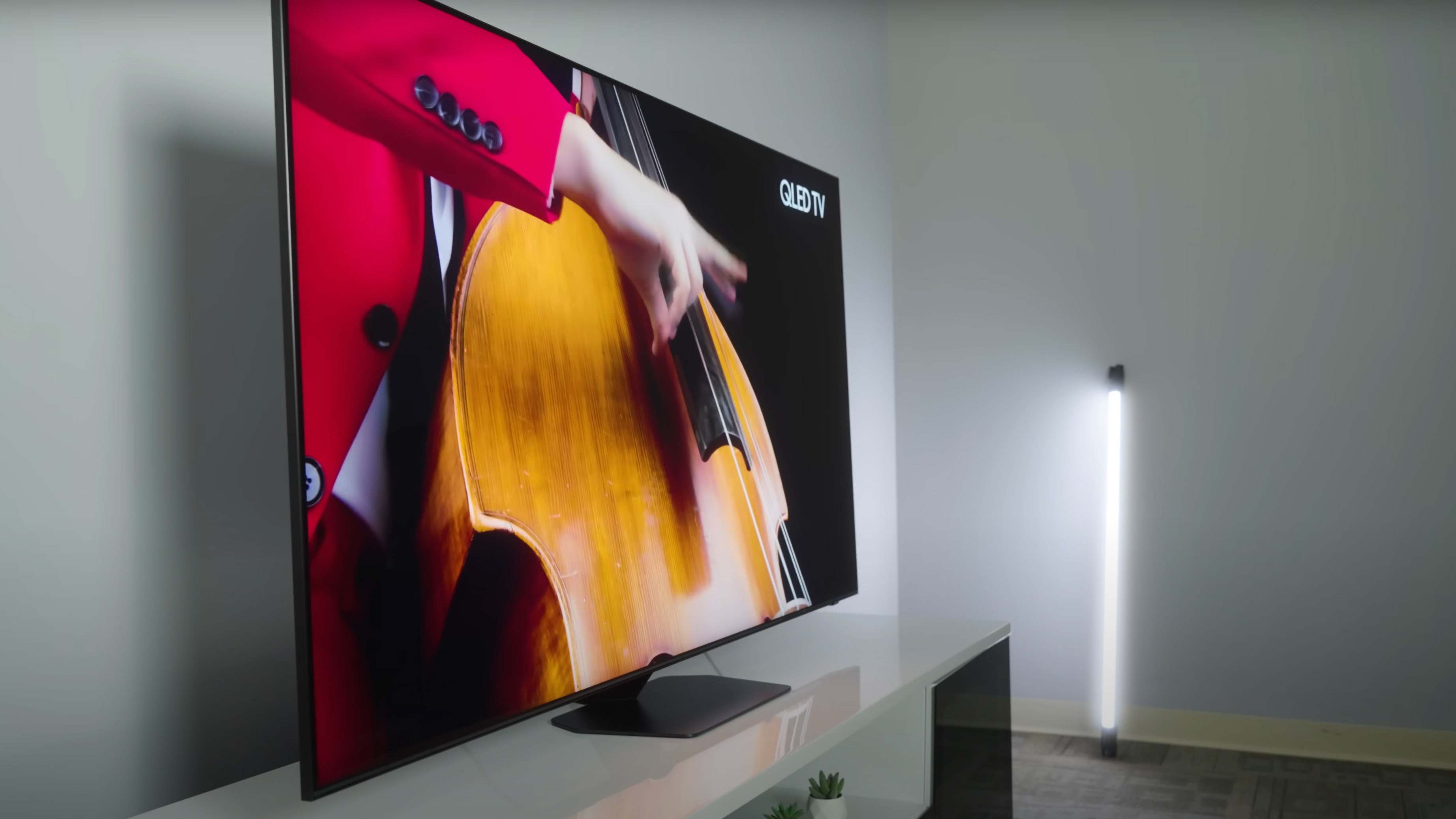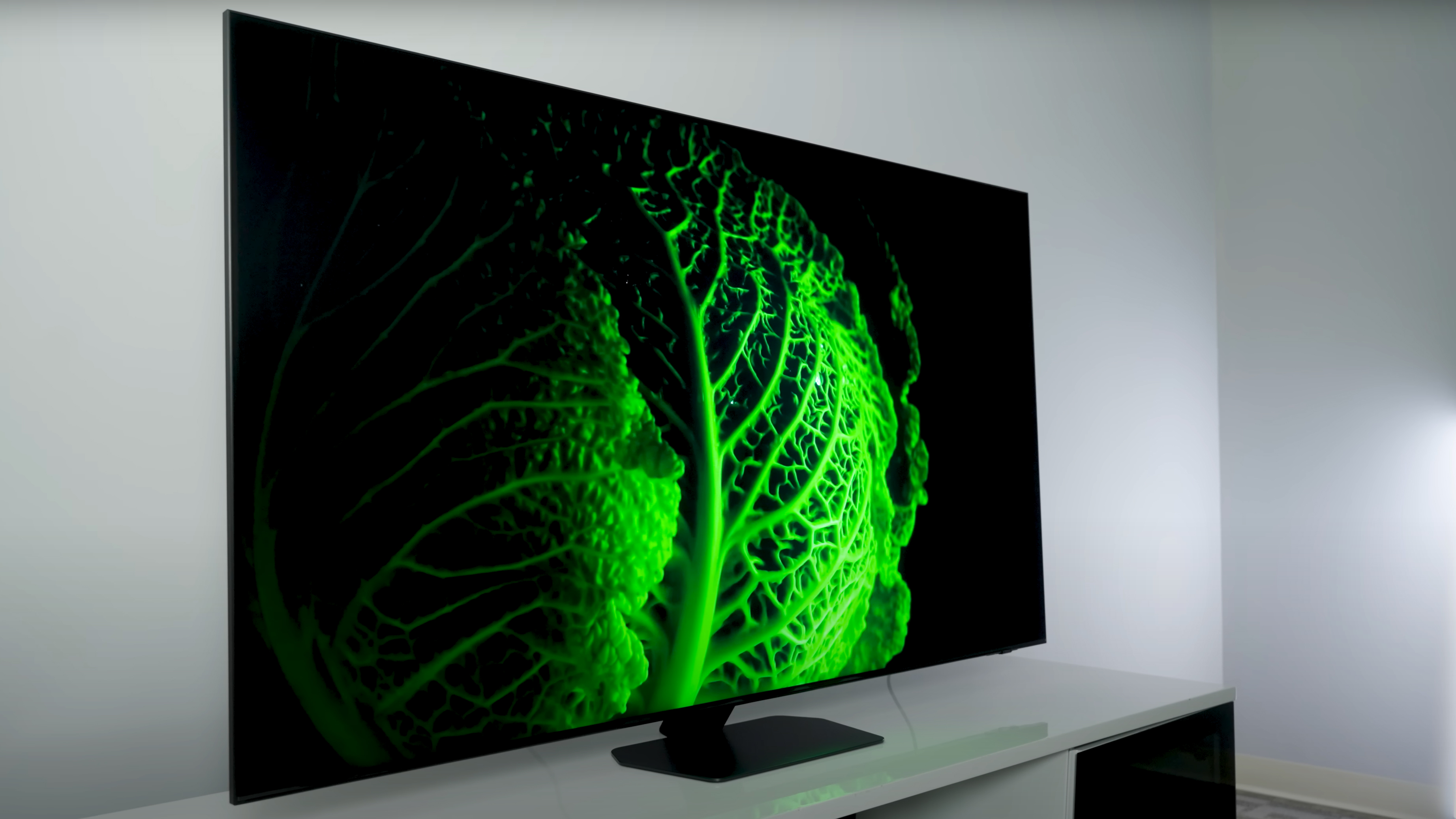I recently returned from a visit with Samsung in New Jersey, where I was given some time to spend in four different rooms, each with a different TV from Samsung’s 2024 lineup.
Now, as these kinds of visits tend to go, I get a limited amount of time to spend with each TV, so it’s not as if I could perform a full review. However, since there were so many products at Samsung’s First Look event during CES, we didn’t get to dive into any of the TVs. And while review samples will be on their way shortly, this is the perfect time to learn more about what’s coming from Samsung.
Let’s get into the QN90D.
What’s new for the QN90D
It seems like ages ago that I reviewed the QN90C, last year’s 4K flagship. It’s been long enough since I enjoyed it that I decided to revisit my own review for a little bit of context.
The QN90C was amazing — very much the 4K flagship QLED you would expect from Samsung. I had only three minor complaints: I felt like the backlight system was a little sluggish. It did a great job of minimizing halo and blooming, as well as providing deep, inky blacks in contrast to very bright, punchy highlights. But I could see the backlight adjustments at times, and that just seemed odd. I also found the Tizen operating system a bit frustrating to deal with. And while its upscaling and image processing was better than less expensive competition from TCL and Hisense, I felt it didn’t stack up to Sony’s processing.

The real reason I just did that little review refresher is that the takeaway for the QN90D is that it keeps everything great about the QN90C and fixes most of those things. The backlight appears speedier, and the upscaling and processing have gone up a notch to the point that I think it will give Sony a better run for its money. As for Tizen? Well, the jury is still out on that one.
I didn’t really have a ton of time to dig into Samsung’s new user interface outside of accessing the menu to make adjustments while measuring the TV. What I can tell you is that along with a fresher look, the new Tizen OS supports a more advanced Health App, a bunch of new SmartThings implementations, and a new Knox Security chip that makes this Smart TV as secure as your phone. This is more important than ever, in no small part, because more personal and financial data than ever may be connected to this TV.
I think Samsung is going to give TCL and Hisense a hard time this year.
The processor is not quite as advanced as the new NQ4 AI Gen 3 processor found in the QN900D 8K TV. This one gets the NQ4 AI Gen 2 processor, which I’d expect since it’s not Samsung’s fanciest TV. That Gen 2 processor is no slouch, though, because I went straight to some challengingly messy content I’ve watched recently on YouTube to see how it cleaned things up, and I saw it doing a marvelous job. Less banding, less macroblocking, less noise, better detail. I stop short of making a comparison to Sony’s processing, but I will say Samsung is giving Sony a real run for its money this year.
Unlike the QN900D, which can punch up to 240Hz, the QN90D can do gaming up to 144Hz with variable refresh rate. It still has four HDMI 2.1 inputs, an ATSC 3.0 tuner, and Samsung’s latest-gen Game Bar.

It’s available in a massive range of sizes, from 43 inches all the way up to 98 inches. A 98-inch QN90D? Yeah, I think Samsung is going to give TCL and Hisense a hard time this year in both the premium 98-inch TV space and the budget 98-inch TV space, but I’ll have more information about that later.
As smart TVs go, the QN90D has just about everything a smart TV could — more than most, actually. It’s just missing Apple HomeKit ( it does SmartThings instead) and Dolby Vision, which is a holdout position Samsung seems quite comfortable with.
Now, as promised, I measured the TV, and I’m excited to share the results with you.
QN90D performance
In Filmmaker mode for SDR, we expect to see great accuracy here — and we do. The only trick was that the Filmmaker mode picture preset defaults to Warm 2 for the color temperature, and the measurements I got using that setting were not nearly as accurate as what I got when I switched it over to Warm 1. I don’t love that, but two or three extra clicks for results like what I got? I’ll allow it.
In its tamest SDR mode, the TV puts out about 300 nits for SDR. But it can easily get way, way brighter than that. The grayscale was excellent! And so, too, was the color accuracy. I don’t think there were any errors over a Delta E of 3, which means any deviation is so small that it isn’t even visible to the human eye. That’s outstanding. Well done, Samsung!
Let’s move to HDR. For peak brightness, the QN90D peaked around 2,100 nits for me, and not just at a 10% window; it did it at almost all window sizes approaching full-screen, where it still put out a blistering 800 nits. The QN90D is a sufficiently bright TV, to be sure.
The grayscale in HDR was … good. Not perfect, but good. It’s typical to see the brighter shades losing a bit of accuracy. But the electro-optical transfer function (EOTF) in HDR? I don’t recall it tracking high when I tested it, but the data says otherwise. So we’ll want to check that again when this TV is in for review. I know the QN900D tracked this perfectly for HDR, as the creator intended it to be seen. This suggests that the QN90D would over-brighten things just a bit, which is something Samsung’s TVs did early on, but that was fixed last year. Given last year’s performance and what I saw on the QN900D 8K TV and one other TV I haven’t told you about yet, I’ll give Samsung the benefit of the doubt. (Watch this space, though, because you do not want to miss it.)

In the end, the QN90D will be a class-leading TV. It may also be class-leading in terms of price, though. This premium Samsung will come with a premium price tag.
I realize this is the first flagship QLED TV we’ve taken a serious look at, but the QN90D kind of sets the bar regardless. Now it’s time to see how the competition stacks up. Something tells me Samsung is going to hold its own, but we shall see. That’s half the fun!











